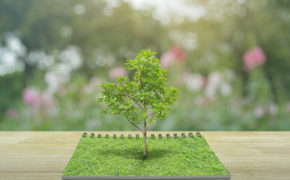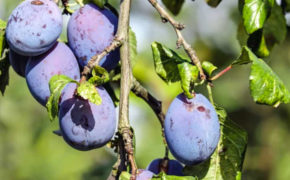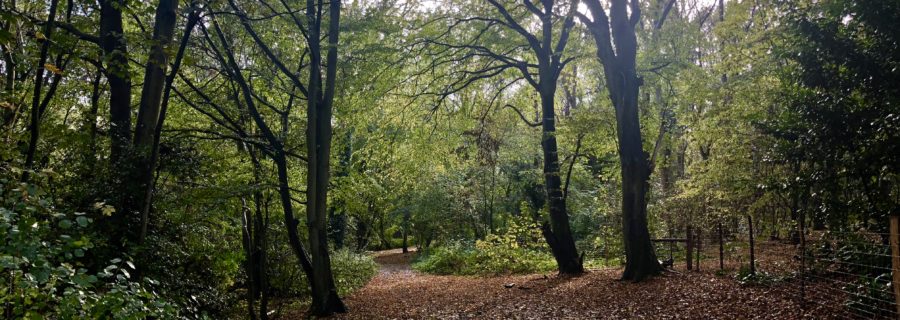
Get a quick no obligation quote It’s free and will only take a jiffy!
Why do trees change colour and lose their leaves in autumn?
Autumn; such a wonderful time of year when an array of spectacular hues adorn our gardens, parks and avenues. As September turns to October and the clocks give us back an hour, a tremendous kaleidoscope of colour gradually emerges, and it’s all thanks to our glorious trees.
We are all familiar with the changing colours of autumn, but just what is it that causes our trees to transform from green to yellow, russet, pink, purple, red and bronze? The science behind autumn leaves is precisely what we’re taking a look at in this post.
What causes colour change in leaves?
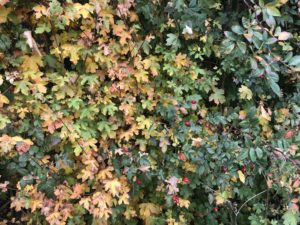 The cells of the leaves rely on pigments to help them get food. These pigments are green chlorophyll, yellow carotenes and red and pink anthocyanins. It’s these pigments that give leaves their colour.
The cells of the leaves rely on pigments to help them get food. These pigments are green chlorophyll, yellow carotenes and red and pink anthocyanins. It’s these pigments that give leaves their colour.
When summer starts to fade and autumn takes hold, the days become shorter and colder. These climate changes prompt various changes in leaves, and it’s these changes that are behind the colour transformation. Let’s take a look at these changes.
Shorter days mean less sunlight, which means less need for chlorophyll. Production of this pigment slows down and eventually stops. With no new green pigment being created, what is there starts to break down.
Even though you can’t see them, spring and summer leaves contain yellow and orange pigments. The reason they are not visible is because the stronger green pigment masks them. So, when the green chlorophyll starts to break down, the yellow and orange start to show through. So really it’s more of an uncovering than a transformation!
At the same time all of this is happening, a layer of corky cells starts to form across the base of the leaf stalk. These cells prevent sugars moving back from the leaves to the main tree. As the sugars get trapped and concentrated in the leaf, they start to convert to the red and pink anthocyanins, which give the leaves a red, pink or purple colour.
What affects autumn colours?
 Various factors can have an effect on the intensity of autumn colours. These include temperature, moisture and sunshine.
Various factors can have an effect on the intensity of autumn colours. These include temperature, moisture and sunshine.
Some years you’ll see more intense reds. This is usually due to temperatures remaining above freezing. Anthocyanin production is promoted in these conditions, which means way more red leaves.
Where there is a lack of rain, again more anthocyanin is produced which again means more red leaves. This is due to sugars becoming more concentrated in the leaves in dry conditions.
Bright autumn sunshine keeps photosynthesis going. So, even though chlorophyll production comes to a halt, the remaining green pigment gets used up faster. As a result, sugar concentration gets a boost leading to more anthocyanin production and, you’ve guessed it, redder leaves.
Why do leaves drop from trees in autumn?
 The scientific name for the dropping of leaves is abscission, a word that derives from the Latin ‘scindere’ which means ‘to cut’.
The scientific name for the dropping of leaves is abscission, a word that derives from the Latin ‘scindere’ which means ‘to cut’.
We mentioned previously about a layer of corky cells forming across the base of the leaf stalk. This happens at the point where the leaf stalk meets the stem. The layer of cells is called the ‘abscission layer’, and it is formed whilst the leaf is actively growing during springtime.
Once autumn comes along, the hormones of the tree start to go through changes. One of these hormones – the one that goes through the most changes – is auxin. Whilst the tree is actively growing, auxin production remains steady and as a result, the abscission layer stays connected, so the leaves stay where they are.
As temperatures drop and sunlight hours diminish, so auxin levels start to drop. Without this hormone, the corky cells start to get longer, which causes fractures leading to the leaves breaking away from the tree. Eventually the weight of the leaf causes it to fall, or the wind finishes the job.
Autumn benefits
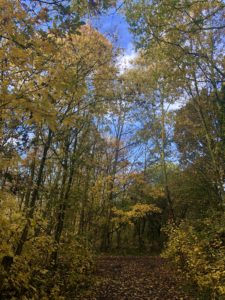 The good thing about autumn leaf shedding is that it allows trees to hold on to the moisture they’ve built up in their branches and trunks, so that they do not dry out over the winter. A tree without leaves is also well primed for the stark winter months. In its state of dormancy, the tree can rely much less on energy to survive when nutrients are scarce.
The good thing about autumn leaf shedding is that it allows trees to hold on to the moisture they’ve built up in their branches and trunks, so that they do not dry out over the winter. A tree without leaves is also well primed for the stark winter months. In its state of dormancy, the tree can rely much less on energy to survive when nutrients are scarce.
Once a tree enters its inactive phase, it is, in most cases the right time to prune it. Usually you will see trees being pruned around parks and on public land during the autumn months. It is a good time because once the dormant period kicks in, the tree stops producing sap, so when it is cut there is no bleeding and therefore a lowered risk of disease.
And of course, autumn trees give us immense pleasure! The stunning colours brighten everything up just as the weather starts to turn. And now you know why they change colour, you’ll look at them in a different light!
Autumn tree pruning – can we help?
If you need a tree pruned this autumn, why not let TH Trees Ltd give you a quote? There’s no size, height or species of tree we can’t safely and effectively deal with. So give us a call on 01268 642814 and let us know how we can help – remember, now is a great time for tree pruning!
All photographs copyright Sarah McInerney/Sarah Mac. All Rights Reserved. Please ask if you wish to use them.
Amazing service from Mark and his team. We had a problem with Bamboo that had spread from a neighbours garden. Mark kept us informed with regular phone calls and images of how the work was progressing, as we were not present the house. 1st class job and a pleasure to do business with this company.
Thank you Colin and Gillian for your kind review. It was a pleasure to be able to clear the bamboo for you.

